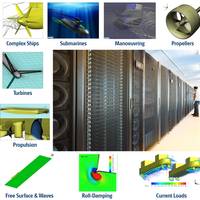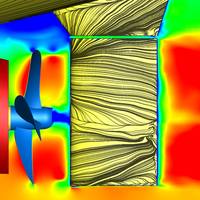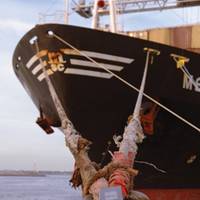Ship Design: Monitoring and Analysis for Emissions Reduction

In April 2015, the European Union adopted a mandatory Monitoring, Reporting and Verification (MRV) regulation for CO2 emissions resulting from maritime transport. The MRV requires operators of large ships to monitor and annually report the verified amount of CO2 emitted on journeys to, from and between EU ports. Using basic input data (distance, fuel, time, cargo weight) and indicators the ship’s performance is determined and reported publicly. Over the past two years MARIN has…
When Using CFD Simulations, an Analysis of Anti-Roll Tanks (ARTS)

In 2014, the behavior of anti-roll tanks was studied at MARIN by using ReFRESCO CFD simulations to fully understand the working principles. In 2014, the behavior of anti-roll tanks (ARTs) was studied at MARIN by using ReFRESCO CFD simulations to fully understand the working principles. The roll motion of ships operating in a seaway often limits operations. These limits could be due to the maximum acceleration, green water, capsize risk or just comfort, for example. Therefore, additional roll damping is often desired to improve the operability of ships.
Complex Hull Shapes Need Sophisticated Assessment
Van Oord asked MARIN to perform a full assessment of the hull lines of its new hopper dredger. Twin gondola aft bodies have been successfully applied to hopper dredgers for many years. This is usually combined with a tunnel head box combination above the propeller. The tunnel leads the water to the propeller, while the head box supports the nozzle and the rudder. However, this results in a very complex shape and consequently, complex flow characteristics. On top of that the operation profile of a hopper dredger is also challenging; sailing in deep and shallow water at two completely different drafts i.e. fully laden and empty. The question arises about how to keep the flow under control in all these conditions.
CFD to Assess SSP’s Crew Boat Docking Tunnel

MARIN combined CFD with fast-time simulations and intensive testing on its bridge simulator to explore the full potential of the new SSP HUB. To save on costly helicopter crew transport, SSP Offshore took a good look at its SSP Plus design and decided to add a large crew boat docking tunnel, running straight through the center of the big round floater. The tunnel allows fast sailing crew boats to dock inside the HUB, thereby cutting out helicopter transfers. MARIN was put to work…
ReFRESCO-Operation Unique Opportunities in CFD

CFD plays an increasingly important role in the design of maritime and offshore structures. MARIN has always supported this with dedicated tool development, extensive validation and application. Naval architects and offshore engineers increasingly use CFD calculations themselves or plan to do so in the near future. To stimulate cooperation and interaction in this field, MARIN now invites its clients to take part in the ReFRESCO-operation. In this partnership, MARIN wants to share its dedicated CFD Code ReFRESCO, which is extensively verified and validated for maritime applications.
MARIN Forms 'Maritime Cluster' Facility

Maritime Research Institute Netherlands (MARIN) announced the formal investment of 2 million Euros in a large and fast Bull computer cluster (4000 computational cores). This supercomputer complements MARIN’s extensive model basins, simulators and full-scale monitoring tools. MARIN’s President, Bas Buchner, said, “Computational Fluid Dynamics plays an increasingly important role in the optimization of ships and offshore structures. As the name suggests, MARIN wants to use this new facility to strengthen the cooperation with the maritime industry.
ReFRESCO: Understanding & Designing Energy Saving Devices

Using Computational Fluid Dynamics (CFD), new insights can be obtained into the working principles of Energy Saving Devices (ESDs), which all serve to increase the fuel efficiency of a ship. The advantages of using ReFRESCO to study ESDs are explored in this article. The capability of simulating different moving objects, and their interaction in on calculation (applying the so-called Sliding Interfaces Technique) has increased the range of applications of the viscousflow CFD code ReFRESCO.
Geometry at the Heart

Computational geometry is at the heart of much of MARIN’s day-to-day business, which includes the hull, appendages and propulsion design and optimization, to the milling of models and detailed CFD calculations. And computational geometry is also set to play a key role in longer-term research and development carried out by MARIN, its clients and partners. In 2012, MARIN started a new, long-term project to update and expand its geometry capabilities for hulls, appendages and propellers.
The Impact of Ships that Pass in the Night… or in the Day

MARIN (Maritime Research Institute Netherlands) is involved in several projects examining the effects of passing ships. Here we present the many ways MARIN helps to shed light on this phenomenon. MARIN’s Shallow Water Basin facilitates a wide range of model testing. A recent ship passing study again showed this versatility when two complete harbours were modelled, including more than 4,000 m of their surrounding shoreline. This ship passing study aimed to investigate the feasibility of two possible new barge dock locations at an existing terminal in Beaumont.






